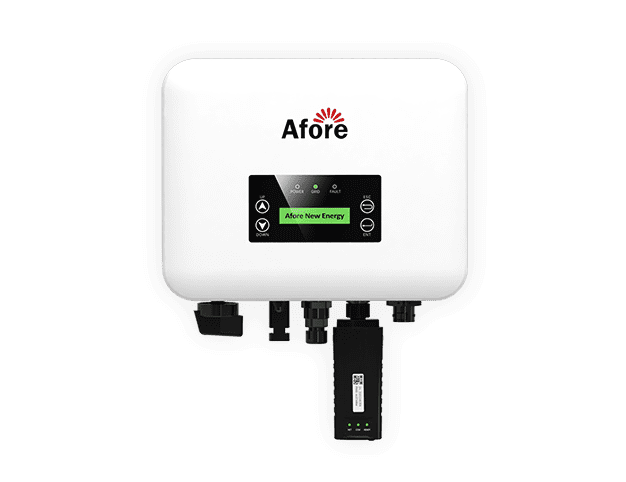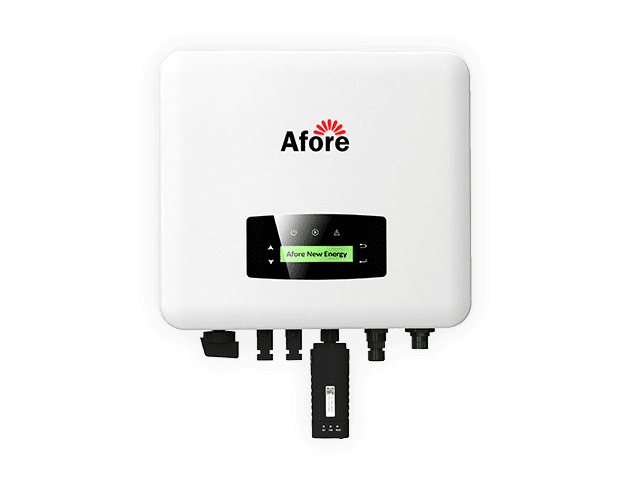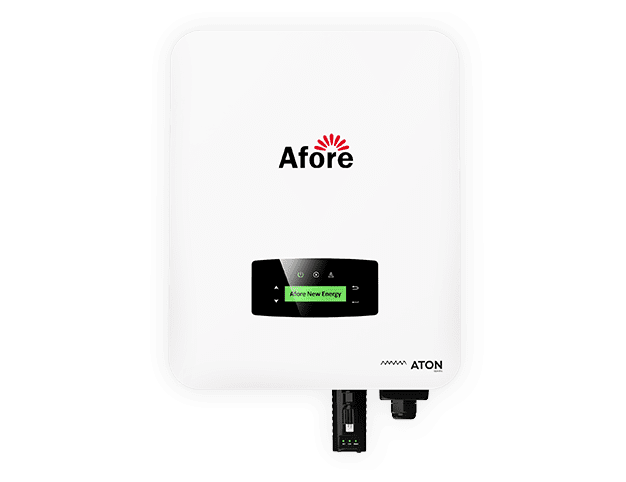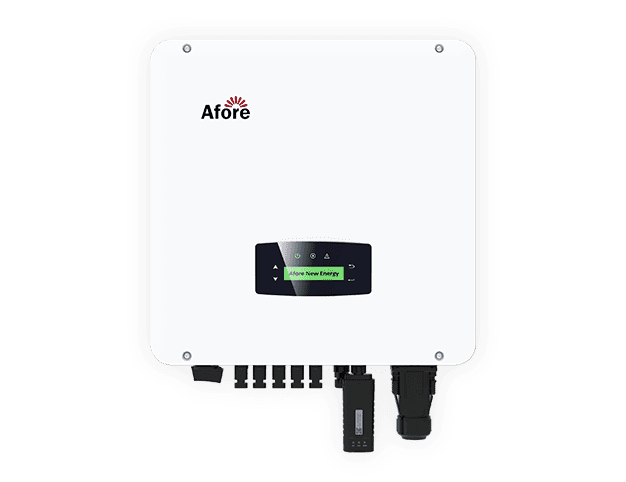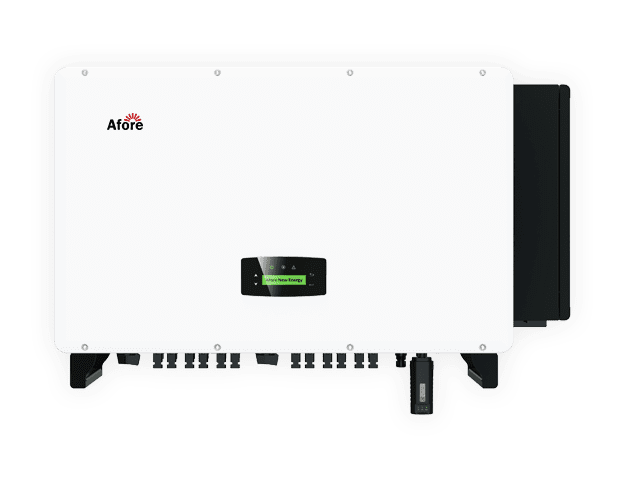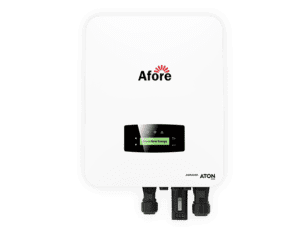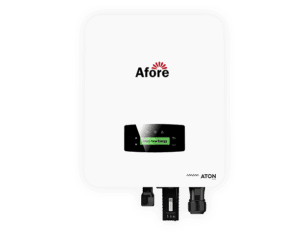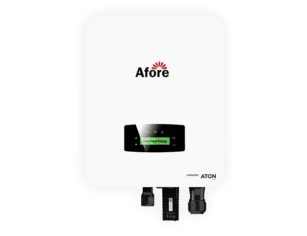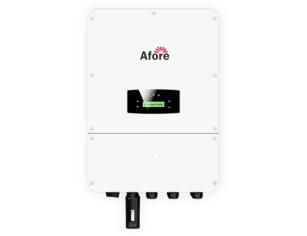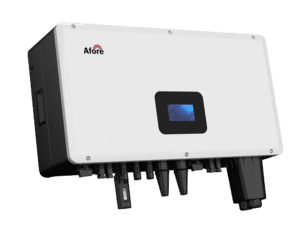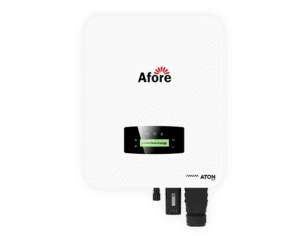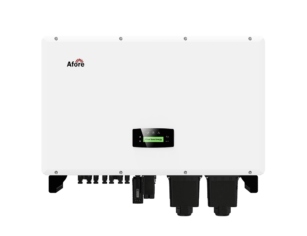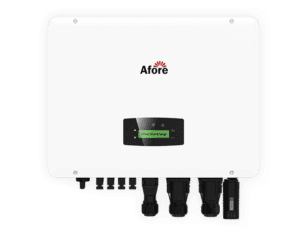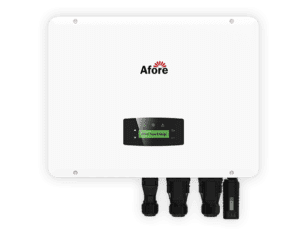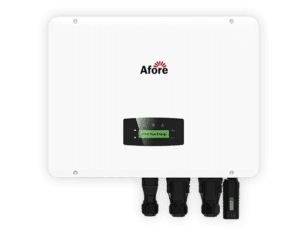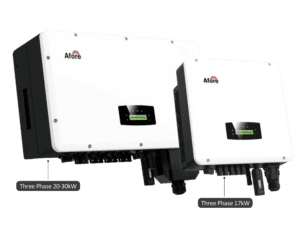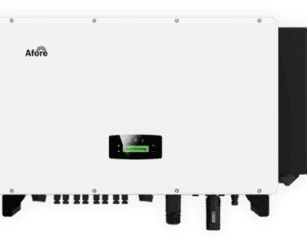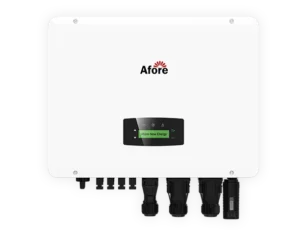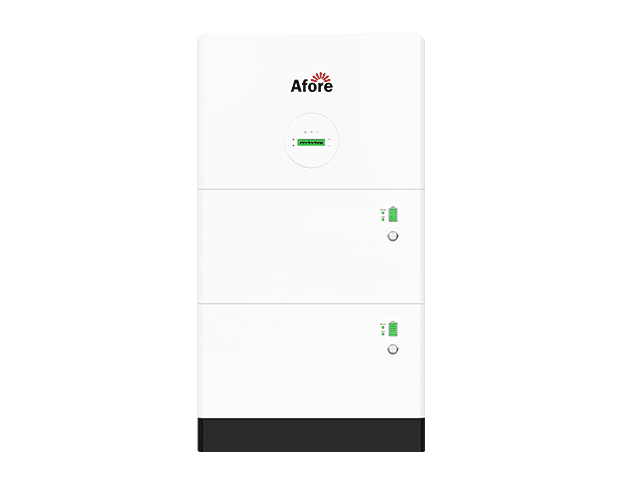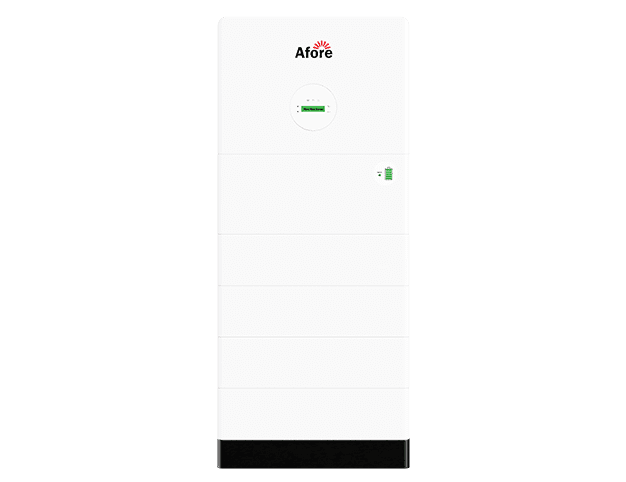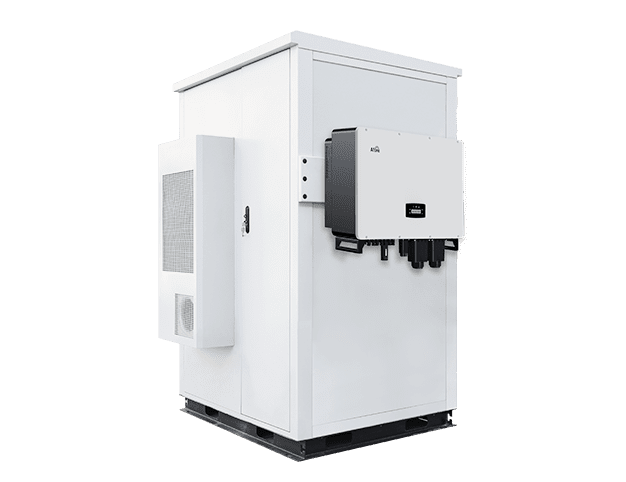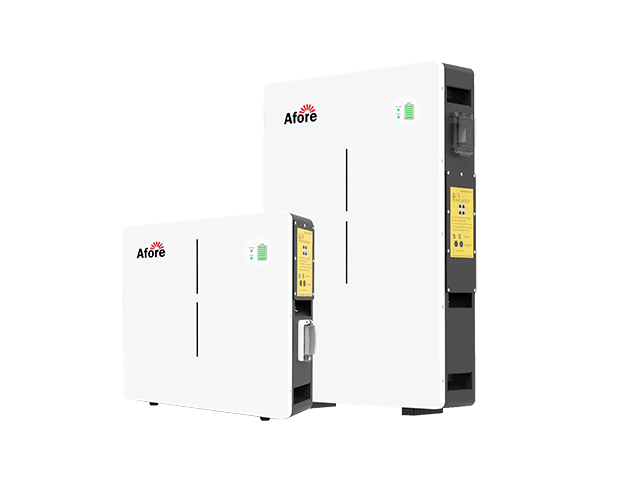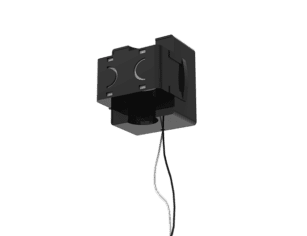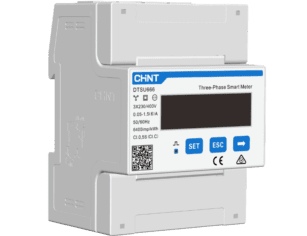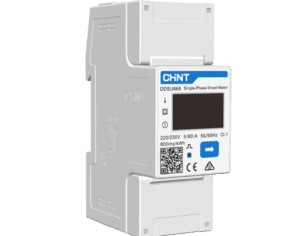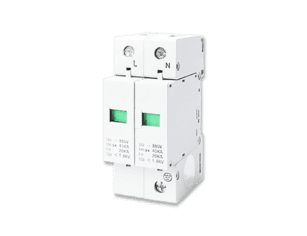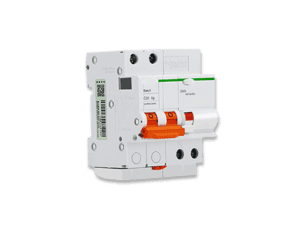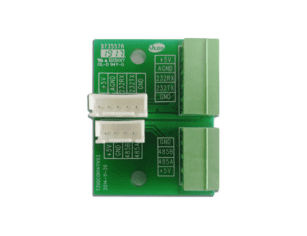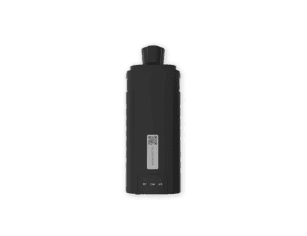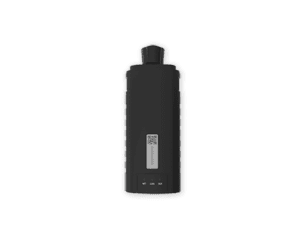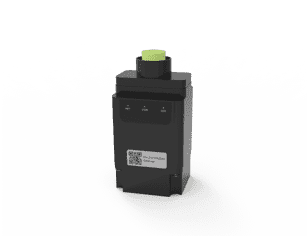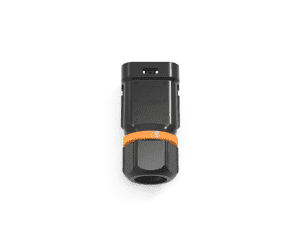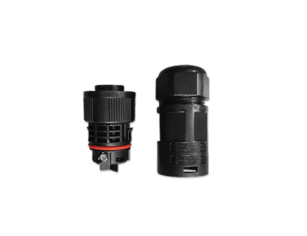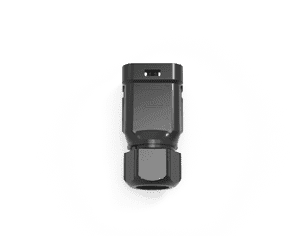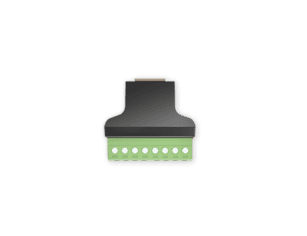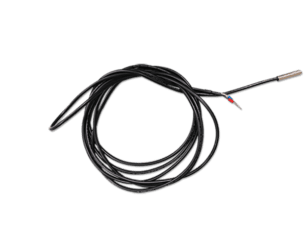Guida alle batterie ad alta tensione per l’energia solare: alta tensione e bassa tensione spiegate

Indice dei contenuti
Nel mondo in continua evoluzione dell’energia solare, il tipo di batteria scelto può fare una grande differenza in termini di prestazioni, efficienza e costi. Se state progettando un impianto solare residenziale o state aggiornando la vostra configurazione esistente, probabilmente vi sarete imbattuti nei termini “batteria HV” e “batteria LV”. Qual è la vera differenza tra le due? Quale dei due è più adatto alle vostre esigenze? E che impatto hanno questi sistemi sulla vostra strategia di accumulo dell’energia?
Immergiamoci nell’elettrizzante mondo delle batterie solari e scopriamo tutto quello che c’è da sapere sulle batterie HV, sulla tecnologia delle batterie ad alta tensione e su come si posizionano rispetto alle cugine a bassa tensione.
Che cos’è una batteria HV?
Una batteria HV, o batteria ad alta tensione, si riferisce a un sistema di batterie che opera a un livello di tensione generalmente superiore a 100 V. Questi sistemi sono progettati per fornire una maggiore potenza e sono spesso utilizzati nei sistemi solari residenziali su larga scala, nei veicoli elettrici e nelle applicazioni commerciali.
Il vantaggio principale di una batteria HV è la sua efficienza. Poiché la perdita di potenza è minore a tensioni più elevate, queste batterie sono perfette per le case affamate di energia o per le configurazioni in cui le prestazioni sono davvero importanti. Inoltre, supportano cicli di carica e scarica più rapidi, il che è un enorme vantaggio se si fa affidamento sul proprio sistema solare per l’uso quotidiano dell’energia e per il backup durante le interruzioni.
Batteria LV: L’opzione più semplice
Le batterie LV, o batterie a bassa tensione, funzionano solitamente nella gamma da 12V a 48V. Sono la scelta tradizionale per molte applicazioni solari off-grid e di piccole dimensioni. Sono meno complesse, più facili da gestire e in genere costano meno delle loro controparti ad alta tensione.
Ma questo non significa che le batterie LV siano obsolete. Al contrario, per le abitazioni più piccole o per i sistemi a uso limitato, una batteria a bassa tensione potrebbe essere esattamente ciò di cui avete bisogno. La semplicità del sistema di gestione delle batterie (BMS), i minori rischi di installazione e la compatibilità con i sistemi preesistenti rendono le batterie BT una scelta solida.
Batterie HV vs LV: La prova di tensione
Quando si tratta di costruire un sistema di accumulo solare affidabile, uno dei maggiori dibattiti nel settore è quello tra batteria hv e batteria lv. Sebbene entrambi i tipi siano utilizzati per immagazzinare energia solare, il loro funzionamento è molto diverso e queste differenze possono avere un impatto significativo su prestazioni, efficienza, costi di installazione e sicurezza.
Allora, qual è il vero problema che si cela dietro la resa dei conti della tensione? Vediamo come funziona.
Qual è la differenza di tensione chiave?
La differenza più evidente sta nel nome. Le batterie HV, abbreviazione di batterie ad alta tensione, funzionano tipicamente a tensioni superiori a 60 V, con molti sistemi residenziali che funzionano tra 100 e 600 V. Al contrario, le batterie LV, o a bassa tensione, funzionano solitamente a 12, 24 o 48V.
Ma non si tratta solo di un gioco di numeri. La tensione gioca un ruolo fondamentale nel comportamento della batteria sotto carico. Un sistema di batterie ad alta tensione consente una corrente inferiore a parità di potenza erogata, il che si traduce in meno calore, cavi più sottili e maggiore efficienza di trasferimento dell’energia. Ecco perché i sistemi di batterie ad alta tensione sono spesso utilizzati nelle moderne installazioni solari residenziali e persino nei veicoli elettrici.
D’altra parte, i sistemi a batteria lv sono molto diffusi nelle installazioni più piccole o nelle configurazioni precedenti, grazie alla loro economicità e alla semplicità dell’elettronica. Tuttavia, i requisiti di corrente più elevati a tensioni inferiori comportano una maggiore perdita di potenza sulla distanza e un cablaggio più spesso, il che può aumentare i costi del sistema e ridurre le prestazioni complessive.
Differenze di efficienza nelle applicazioni solari
Quando si alimenta un inverter o si immagazzina energia dai pannelli solari, le batterie HV offrono chiari vantaggi in termini di efficienza. Questo perché riducono al minimo la corrente che attraversa il sistema. Una corrente più bassa riduce le perdite resistive (ricordate la formula I²R delle lezioni di fisica?), il che significa che una maggiore quantità di energia solare viene immagazzinata e utilizzata invece di essere dispersa come calore.
Molti installatori solari riferiscono che i sistemi costruiti attorno a una batteria HV funzionano meglio in scenari di alta domanda. Ad esempio, quando si alimenta un inverter da 600 W o superiore, si noterà una tensione più costante, una minore flessione sotto carico e una ricarica più rapida da parte del regolatore di carica solare.
Nel frattempo, le batterie a bassa tensione sono più soggette a inefficienze, soprattutto in scenari off-grid in cui sono coinvolti lunghi percorsi di cavi o più inverter. La caduta di tensione diventa un problema e i componenti come i blocchi di fusibili, i sezionatori e gli interruttori devono essere costruiti in modo eccessivo per gestire in modo sicuro le correnti più elevate.
Questo non significa che le batterie a basso voltaggio non abbiano un posto – ce l’hanno assolutamente, soprattutto nelle installazioni mobili o compatte – ma per l’accumulo di energia residenziale a lungo termine, la batteria ad alto voltaggio è spesso la scelta più efficiente.
Considerazioni sulla sicurezza e installazione
Parliamo ora di sicurezza. È opinione comune che una batteria ad alta tensione sia intrinsecamente pericolosa. La verità? Sia i sistemi di batterie ad alta tensione che quelli ad alta tensione comportano dei rischi, ma sono di natura diversa.
Con una batteria ad alta tensione, il pericolo risiede nel potenziale di scossa elettrica. I sistemi ad alta tensione devono essere adeguatamente chiusi, messi a terra e installati con sezionatori di sicurezza. L’installazione richiede professionisti qualificati e, in molte giurisdizioni, i codici locali impongono misure di protezione come interruttori di isolamento e cablaggi HV certificati.
Le batterie a basso voltaggio, invece, sono generalmente considerate più sicure da maneggiare e installare, motivo per cui sono ancora ampiamente utilizzate nei kit solari fai da te. Tuttavia, comportano rischi propri, come il surriscaldamento in presenza di corrente elevata o il bilanciamento improprio quando vengono utilizzate in banchi paralleli. Inoltre, impilare troppe batterie a bassa tensione può complicare il controllo della carica e ridurre la durata del sistema.
Quindi, anche se la batteria ad alta tensione può sembrare più intimidatoria, spesso porta a un funzionamento più sicuro a lungo termine, soprattutto quando il sistema è progettato professionalmente e conforme alle norme.
Scenari d’uso: Quando scegliere HV o LV?
Semplifichiamo ulteriormente le cose. Se state alimentando un’intera abitazione, facendo funzionare l’aria condizionata centralizzata o prevedendo di ampliare il vostro sistema solare in futuro, optate per una batteria ad alta tensione. Questi sistemi sono costruiti appositamente per carichi più grandi e la loro efficienza, la minore complessità di installazione e i vantaggi di una protezione per il futuro li rendono ideali per l’accumulo di energia a livello residenziale.
Ma se le vostre esigenze sono modeste, ad esempio per alimentare un camper, una baita o una piccola casa, allora una batteria a bassa tensione potrebbe essere perfetta. I sistemi al di sotto di 1 kW in genere non beneficiano dei vantaggi di efficienza dell’alta tensione e i componenti delle batterie a bassa tensione sono più economici e facili da reperire.
Inoltre, se siete alle prime armi con l’energia solare e volete qualcosa di facile da installare e da mantenere, un sistema di batterie a bassa tensione è meno intimidatorio da utilizzare: non è necessaria la licenza da elettricista.
Alla fine, non si tratta di una batteria migliore dell’altra, ma di adattare la batteria ai vostri obiettivi. Sia che vogliate fare un’installazione completamente off-grid con un’elegante batteria ad alta tensione, sia che vogliate mantenere le cose semplici con batterie a basso voltaggio, la comprensione dei compromessi vi aiuta a fare scelte energetiche più intelligenti.

Perché i sistemi solari si stanno orientando verso le batterie HV
Con il progredire della tecnologia solare, aumentano anche le aspettative di accumulo. Un numero sempre maggiore di proprietari di case vuole far funzionare i condizionatori d’aria, i veicoli elettrici e persino le pompe della piscina con l’energia solare. Ciò significa carichi maggiori, scariche più rapide e la necessità di uno stoccaggio più efficiente.
La batteria ad alta tensione fa al caso nostro. Supporta i moderni sistemi di inverter, si adatta meglio al crescente fabbisogno energetico ed è a prova di futuro per la vostra installazione solare.
Caratteristiche di sicurezza delle batterie ad alta tensione
Quando si parla di batterie ad alta tensione, il termine può intimorire. Dopo tutto, i sistemi ad alta tensione gestiscono centinaia di volt, abbastanza da sollevare seri problemi di sicurezza se le cose vanno male. Ma la verità è che i moderni sistemi di batterie ad alta tensione sono progettati con meccanismi di sicurezza avanzati che li rendono non solo potenti ed efficienti, ma anche incredibilmente sicuri se installati correttamente.
Vediamo cosa rende sicura una batteria ad alta tensione, come si confronta con le batterie a bassa tensione e perché la sicurezza è una priorità assoluta nelle applicazioni di accumulo dell’energia solare.
Sistemi di gestione della sicurezza integrati
Ogni batteria ad alta tensione è dotata di un Battery Management System (BMS), uno strato integrato di intelligenza digitale che monitora costantemente la tensione, la temperatura, il flusso di corrente e l’equilibrio delle celle. Questo sistema è la prima linea di difesa contro cortocircuiti, sovraccarichi, surriscaldamento o qualsiasi tipo di irregolarità elettrica.
Ad esempio, se la batteria inizia a surriscaldarsi durante una carica solare rapida, il BMS riduce automaticamente la corrente di carica o scollega il sistema per evitare una fuga termica. Se una cella si sbilancia o viene rilevato un potenziale cortocircuito, il BMS può isolare quella parte della batteria mantenendo il funzionamento complessivo.
Questo è un settore in cui le batterie ad alta tensione tendono a superare molti vecchi sistemi di batterie a bassa tensione. Sebbene anche le batterie a bassa tensione utilizzino la tecnologia BMS, i loro sistemi sono spesso meno complessi o non altrettanto reattivi in scenari di stress elevato. Al contrario, i sistemi di batterie ad alta tensione sono spesso costruiti tenendo conto della ridondanza: sensori multipli, interruzioni termiche e interfacce di comunicazione con l’inverter per garantire che tutto funzioni correttamente.
Isolamento e involucri protettivi
Una delle caratteristiche principali che rendono più sicura una batteria ad alta tensione è l’isolamento elettrico. Le batterie ad alta tensione di alta qualità sono racchiuse in involucri protettivi realizzati con materiali ignifughi e i loro terminali sono solitamente incassati o coperti per evitare contatti accidentali.
La maggior parte delle moderne configurazioni di batterie ad alta tensione include anche sezionatori, fusibili e interruttori ad alta tensione a portata di mano del banco di batterie, che consentono di interrompere rapidamente l’alimentazione in caso di emergenza. Questi componenti di sicurezza sono essenziali nelle installazioni solari sia residenziali che commerciali e sono richiesti dal codice in molte giurisdizioni.
Sebbene questi livelli di protezione possano sembrare poco all’apparenza, sono il motivo per cui gli incendi o gli incidenti alle batterie HV sono incredibilmente rari, soprattutto quando il sistema è installato da un professionista certificato.
Gestione termica: Mantenere il freddo
Se c’è una cosa che non piace alle batterie è il calore. Temperature eccessive possono portare a una rapida perdita di capacità, al rigonfiamento o, peggio, alla combustione. Ecco perché le batterie ad alta tensione sono spesso dotate di sistemi di gestione termica attiva, soprattutto nelle grandi installazioni residenziali o industriali.
Alcune batterie ad alta tensione utilizzano il raffreddamento a liquido, altre la ventilazione forzata e molte includono sensori termici che spengono il sistema se viene superato un intervallo di temperatura sicuro. Questo aspetto è particolarmente importante nei sistemi solari che operano in climi caldi, dove i banchi di batterie sono esposti al calore ambientale per lunghi periodi.
Le batterie a basso voltaggio, invece, spesso si affidano a un raffreddamento passivo o mancano del tutto di gestione termica, soprattutto nei modelli più economici o fai-da-te. Ciò rende le batterie ad alta tensione la scelta più stabile per le applicazioni in cui la richiesta di energia è elevata e le condizioni ambientali non sono ottimali.
Standard di prevenzione e spegnimento degli incendi
Ammettiamolo: nessuna batteria è completamente priva di rischi. Ma i produttori di batterie ad alta pressione si sono impegnati a fondo per ridurre al minimo questo rischio grazie a un’avanzata progettazione per la prevenzione degli incendi. Molti sistemi sono ora conformi ai test di sicurezza antincendio UL 9540A, che garantiscono che la batteria non propaghi il fuoco alle unità vicine in caso di malfunzionamento di una cella.
In caso di guasto grave, una batteria ad alta tensione può includere valvole di scarico della pressione, sensori di rilevamento del gas o persino meccanismi integrati di soppressione degli incendi. Queste caratteristiche possono impedire che un evento termico si aggravi, proteggendo non solo la batteria ma anche l’abitazione che alimenta.
Anche se i sistemi di batterie a bassa tensione possono soddisfare gli standard antincendio, in genere non offrono lo stesso livello di soppressione integrata o meccanismi di failover. Per i proprietari di casa che danno priorità alla sicurezza, questi progetti resistenti al fuoco sono un motivo convincente per scegliere l’alta tensione rispetto alla bassa tensione.
Conformità normativa e installazione professionale
Un’altra chiave per la sicurezza? La conformità e l’installazione certificata. La maggior parte dei sistemi di batterie ad alta tensione è progettata per soddisfare codici rigorosi, tra cui le certificazioni UL, IEC e CE. Questi parametri di sicurezza garantiscono che le batterie siano in grado di gestire condizioni elettriche estreme senza guastarsi.
Inoltre, i sistemi di batterie ad alta tensione richiedono in genere elettricisti autorizzati per l’installazione. Sebbene questo possa sembrare un ostacolo rispetto ai kit di batterie LV plug-and-play, garantisce anche che i protocolli di sicurezza siano seguiti fin dall’inizio, riducendo la possibilità di errori di cablaggio, messa a terra impropria o problemi di ventilazione.
Le batterie a basso voltaggio, invece, sono spesso preferite nelle costruzioni fai-da-te per la loro flessibilità e facilità d’uso. Ma senza una corretta conoscenza o supervisione, la sicurezza può essere compromessa, soprattutto quando si impilano le batterie in modo inappropriato o si sovraccaricano i circuiti.

Ripartizione tecnica: Accatastamento e tensione
Uno degli aspetti più affascinanti – e spesso fraintesi – della tecnologia delle batterie è l’impatto dell’impilamento sulla tensione. Sia che si stia configurando un sistema di accumulo solare utilizzando una singola batteria ad alta tensione, sia che si stiano combinando più batterie a bassa tensione, il modo in cui le si impila ha serie implicazioni per la potenza erogata, l’efficienza del sistema e la sicurezza.
Cosa succede quando si impilano le batterie?
L’impilamento si riferisce al collegamento di più celle o moduli di batterie in serie (per aumentare la tensione) o in parallelo (per aumentare la capacità). Quando si collegano le batterie in serie, la tensione di ciascuna cella viene sommata. Quindi, tre batterie a bassa tensione da 48 V impilate in serie produrranno 144 V in totale, entrando nel territorio delle batterie ad alta tensione.
D’altra parte, impilare le batterie in parallelo non aumenta la tensione, ma semplicemente la capacità di ampere-ora, garantendo una maggiore autonomia senza modificare la tensione di uscita.
Nelle applicazioni solari, l’impilamento è spesso essenziale. Una singola batteria lv potrebbe non essere in grado di fornire la tensione o l’energia necessaria per un’intera abitazione. Ma impilando in modo intelligente, in serie o in parallelo, è possibile creare un banco di batterie che corrisponda ai requisiti dell’inverter solare e alla domanda domestica.
Quanto possono essere impilate le batterie?
Tecnicamente parlando, non esiste un limite universale al numero di batterie impilabili, ma esistono limiti pratici e normativi che i progettisti di impianti solari devono rispettare.
Ad esempio, un tipico banco di batterie ad alta tensione per uso residenziale può includere diversi moduli impilati in serie per raggiungere i 400-600 V. Si tratta di una tensione sufficiente per far funzionare in modo efficiente la maggior parte degli inverter ad alta tensione, riducendo al minimo la perdita di corrente durante la trasmissione. Se però si va molto più in alto, si iniziano a incontrare problemi di sicurezza, limiti normativi e problemi di gestione termica.
Al contrario, impilare le batterie a bassa tensione troppo in serie può creare configurazioni instabili che non sono adeguatamente protette dal BMS. Ecco perché molti sistemi di batterie a basso voltaggio limitano l’impilamento a 4 o 5 unità, a meno che non siano progettati come parte di un sistema integrato più grande.
Vale la pena di notare che le batterie ad alta tensione sono in genere costruite pensando all’impilamento. Ogni modulo è progettato per comunicare con il resto della pila, garantendo il bilanciamento della tensione e la stabilità termica. Questo le rende ideali per le grandi installazioni di accumulo solare, dove la scalabilità modulare è fondamentale.
Perché l’impilamento aumenta la tensione (e perché è importante)
La tensione è ciò che spinge la corrente attraverso un filo. Una tensione più alta significa che è possibile trasmettere energia su distanze maggiori con una minore perdita di energia. Questo è uno dei vantaggi principali di un sistema di batterie ad alta tensione: consente di utilizzare cavi più sottili, inverter più piccoli e una maggiore efficienza.
Quando si impilano le batterie in serie per creare una batteria HV, si aumenta la tensione totale del sistema. Questa configurazione può essere particolarmente vantaggiosa per le installazioni solari, dove l’inverter deve convertire l’elettricità CC immagazzinata in energia CA utilizzabile. Una tensione di ingresso CC più elevata significa che l’inverter può funzionare in modo più efficiente e fornire una produzione più costante.
Le batterie a bassa tensione, invece, sono spesso limitate a 12V, 24V o 48V. Sebbene queste tensioni siano più sicure da gestire e più comuni nei camper o nei sistemi off-grid su piccola scala, richiedono una corrente molto più elevata per erogare la stessa potenza, il che comporta cavi più spessi, maggiori perdite di calore e infrastrutture più ingombranti.
Ad esempio, l’alimentazione di un carico da 5 kW con un sistema di batterie a 48 V richiederebbe oltre 100 ampere, mentre un sistema di batterie a 400 V richiederebbe solo 12,5 ampere per la stessa potenza. Si tratta di una differenza enorme in termini di cablaggio, raffreddamento e ingombro complessivo del sistema.
Serie e parallelo: L’approccio ibrido
Molte moderne configurazioni di batterie solari utilizzano un modello di impilamento ibrido, che combina connessioni in serie e in parallelo per bilanciare tensione e capacità. Ad esempio, si possono avere tre stringhe di batterie HV collegate in parallelo, ognuna contenente diversi moduli in serie. Questa configurazione aumenta la capacità di accumulo totale mantenendo i vantaggi dell’alta tensione del sistema.
I produttori progettano questi sistemi modulari tenendo conto dei limiti di impilamento. Il sistema di gestione delle batterie (BMS) tiene traccia dello stato di ogni cella, assicurando che le batterie siano bilanciate in modo sicuro in tutto lo stack. Nei sistemi di batterie ad alta tensione, questo monitoraggio è più sofisticato e spesso si integra con l’inverter e persino con la diagnostica basata su cloud per fornire una supervisione in tempo reale.
Le batterie a basso voltaggio, invece, sono più inclini allo squilibrio se impilate in modo improprio. Senza un BMS forte o protocolli di comunicazione intelligenti, il sistema può sovraccaricare alcune celle e sottocaricarne altre, un rischio che aumenta con l’aggiunta di ogni modulo.
Impilare in modo intelligente: Cosa considerare
Prima di impilare le batterie in qualsiasi impianto solare, sia esso fotovoltaico o a bassa tensione, è necessario tenere conto di alcuni aspetti:
- Compatibilità con il BMS: Il sistema supporta lo stacking e come il BMS gestisce la tensione e la temperatura?
- Gamma di tensione dell’inverter: L’inverter è in grado di gestire la tensione totale delle batterie impilate?
- Gestione termica: Più moduli significano più calore. Il vostro sistema è progettato per rimanere fresco sotto carico?
- Spazio e ventilazione: È possibile ospitare fisicamente la configurazione impilata e lo spazio consente il flusso d’aria?
- Standard di sicurezza: Le batterie sono testate o certificate UL 9540A per l’impilamento ad alta tensione?
Sia che si utilizzino batterie a basso voltaggio in una piccola baita o che si costruisca un sistema di batterie ad alta tensione all’avanguardia per una casa di grandi dimensioni, impilare le batterie nel modo giusto è ciò che fa la differenza tra un’alimentazione sicura e affidabile e una configurazione potenzialmente pericolosa.battery system for a full-sized home, stacking batteries the right way is what makes the difference between a safe, reliable power supply—and a potentially dangerous setup.
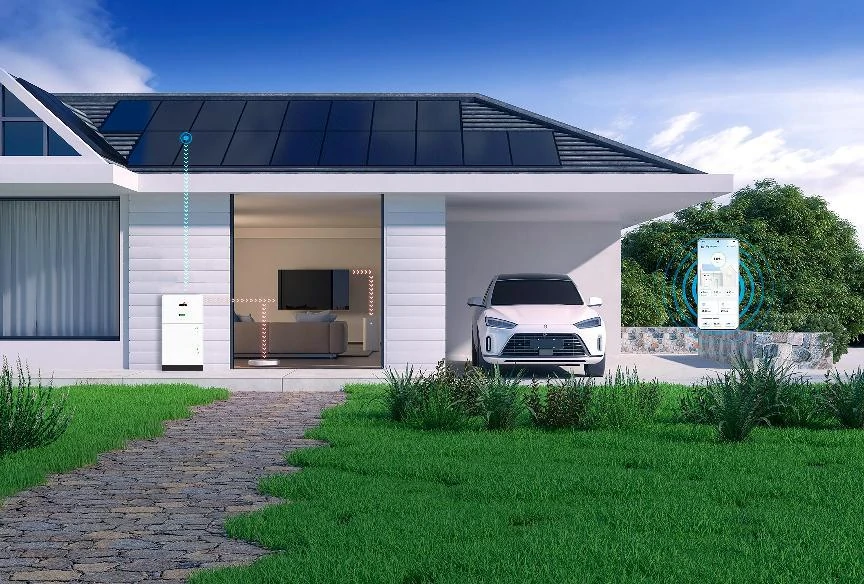
Quanto durano le batterie HV?
Una batteria HV ben mantenuta dura in genere da 10 a 15 anni. Alcuni modelli più recenti promettono addirittura di arrivare a 20 anni con un ciclo e un controllo climatico adeguati. La durata dipende anche da:
- Profondità di scarico
- Velocità di carica
- Temperatura di esercizio
- Utilizzo quotidiano
Rispetto alle batterie LV, i sistemi HV tendono a invecchiare più facilmente, soprattutto se utilizzati in ambienti ad alta domanda.
Considerazioni sull’installazione
Se state prendendo in considerazione una batteria HV per la vostra installazione solare, tenete presente:
- È necessario un inverter che supporti l’ingresso ad alta tensione.
- Il cablaggio deve soddisfare standard di sicurezza più severi
- Alcune giurisdizioni richiedono installatori certificati per i sistemi ad alta tensione.
Detto questo, l’installazione è diventata più semplice grazie ai design modulari e ai sistemi plug-and-play.
I 3 tipi di batterie utilizzate nel solare
Quando si parla di energia solare, si parla generalmente di tre tipi di batterie:
- Ioni di litio (LiFePO4, NMC) – Disponibili in versione HV e LV, ideali per i moderni sistemi solari.
- Piombo-acido (AGM, Gel) – Principalmente LV, più economici ma più ingombranti e di durata inferiore.
- Batterie a flusso – Rare, costose, ma ottime per lo stoccaggio a lunga durata.
Gli ioni di litio dominano il mercato odierno grazie alla loro versatilità, soprattutto nella forma di batterie HV.
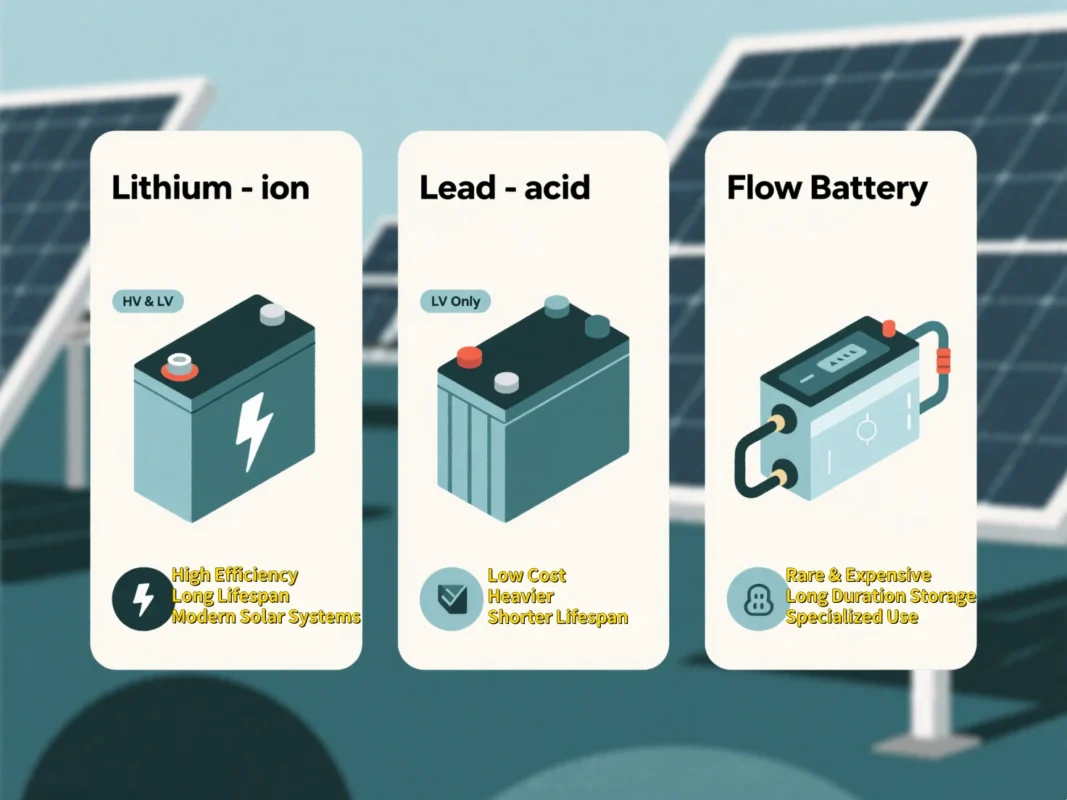
Conclusione
Quindi, è meglio scegliere una batteria HV o una batteria LV?
Se la vostra casa ha un fabbisogno energetico significativo, elettrodomestici moderni o progetti per un veicolo elettrico, una batteria ad alta tensione vi darà la flessibilità, la velocità e l’efficienza di cui avete bisogno. Se invece il vostro fabbisogno energetico è modesto o avete un budget limitato, le batterie a basso voltaggio possono comunque garantire risultati eccellenti.
Il mercato delle batterie solari si sta evolvendo rapidamente e i sistemi di batterie HV sono all’avanguardia di questa innovazione. Che si tratti di alimentare la casa intelligente dei vostri sogni o di tenere accese le luci durante un blackout, la scelta del giusto sistema di tensione fa la differenza.
Ricordate: Non guardate solo al costo, ma anche alle prestazioni, alla scalabilità e al valore a lungo termine. E collaborate sempre con un installatore certificato per garantire che il vostro sistema di batterie sia tanto sicuro quanto potente.
FAQs
Che cos’è la batteria HV?
Una batteria HV (abbreviazione di High Voltage Battery) è un sistema di batterie che funziona tipicamente a tensioni superiori a 100 volt (in genere da 200 a 800 volt). Il vantaggio principale delle batterie ad alta tensione è che sono in grado di fornire energia in modo più efficiente, con correnti più basse e cavi più sottili, il che le rende adatte ai sistemi ad alta domanda.
Cosa sono le batterie LV e HV?
La sigla LV sta per batteria a bassa tensione, solitamente a 12V, 24V o 48V. Sono molto diffuse nei camper, nelle imbarcazioni, nelle piccole applicazioni solari e nei sistemi di backup. Le batterie HV, invece, funzionano a tensioni molto più elevate e sono più adatte a sistemi solari su larga scala o a configurazioni ibride che richiedono una distribuzione efficiente dell’energia su distanze maggiori. La differenza fondamentale sta nella tensione di uscita e nella capacità di gestione della potenza del sistema. Mentre le batterie a bassa tensione sono più facili e sicure da installare, quelle ad alta tensione sono più efficienti e scalabili.
Cosa si intende per spegnimento della batteria HV?
Quando una batteria ad alta tensione si spegne, in genere significa che il sistema ha raggiunto un limite di sicurezza, come una sovratensione, una sottotensione, un surriscaldamento o uno squilibrio tra le celle della batteria. Il sistema di gestione della batteria (BMS) scollega la batteria dal carico o dalla fonte di carica per evitare danni. Si tratta di un meccanismo di sicurezza integrato che protegge sia la batteria sia i dispositivi che alimenta. Nei sistemi di accumulo solare, questo potrebbe interrompere temporaneamente il flusso di energia, quindi è importante diagnosticare rapidamente la causa.
Quanto durano le batterie HV?
La durata di una batteria ad alta tensione dipende in larga misura dalla sua chimica, dalle modalità di utilizzo e dalla manutenzione. La maggior parte delle batterie ad alta tensione utilizzate per l’accumulo di energia solare utilizza la tecnologia agli ioni di litio e ha in genere un’aspettativa di vita di 10-15 anni, ovvero circa 6.000-8.000 cicli. Ciò è sufficiente per la maggior parte degli impianti solari residenziali. Un’installazione adeguata, una buona ventilazione e la possibilità di evitare scariche profonde possono contribuire a prolungare notevolmente la durata della batteria.
Quali sono i 3 tipi di batterie?
Quando si parla di batterie per applicazioni solari, i tre tipi principali sono:
- Batterie al piombo – Convenienti, ma più ingombranti e con una durata inferiore. Disponibili solo in LV.
- Batterie agli ioni di litio – La scelta più comune oggi per i sistemi di batterie lv e hv. Offrono una maggiore durata, una ricarica più rapida e una maggiore efficienza.
- Batterie a flusso – Ancora emergenti nel mercato residenziale, ma promettenti per l’accumulo di energia a lunga durata. In genere sono a basso voltaggio e ingombranti.
Ogni tipo ha i suoi punti di forza, ma gli ioni di litio sono diventati il gold standard sia per le batterie a bassa tensione che per quelle ad alta tensione nel moderno accumulo solare.
L’impilamento delle batterie aumenta la tensione?
Sì, l’impilamento delle batterie in serie aumenta la tensione, mentre l’impilamento in parallelo aumenta la capacità. Ad esempio, collegando quattro batterie da 48 V in serie si ottiene un sistema di batterie da 192 V hv. Questa tensione più elevata è ideale per gli inverter solari e riduce al minimo le perdite di potenza. Tuttavia, l’impilamento deve essere effettuato con attenzione e con un BMS compatibile per garantire sicurezza e prestazioni.
A che altezza possono essere impilate le batterie?
Tecnicamente, le batterie possono essere impilate fino a raggiungere la tensione di progetto del sistema o i limiti stabiliti dal produttore delle batterie. Nelle installazioni residenziali, i sistemi di batterie ad alta tensione spesso raggiungono i 400-600 V. Questo risultato si ottiene impilando più moduli in serie. Tuttavia, un accatastamento eccessivo senza controlli adeguati può provocare un accumulo di calore, uno squilibrio o persino rischi per la sicurezza. Seguire sempre le specifiche del produttore e considerare la ventilazione, il peso e la distanza tra gli armadi.
Quale è più sicuro: Batteria HV o batteria LV?
Dal punto di vista della gestione, le batterie a basso voltaggio sono generalmente più sicure grazie al minor rischio di scosse elettriche. Tuttavia, le batterie ad alta tensione non sono intrinsecamente pericolose: richiedono solo un’installazione più precisa, funzioni di sicurezza come i circuiti di precarica e un BMS robusto. Se installati correttamente da professionisti, i sistemi di batterie ad alta tensione sono sicuri e altamente affidabili.
È meglio scegliere una batteria HV o LV per l’accumulo solare domestico?
Dipende dai vostri obiettivi energetici. Se state alimentando una piccola baita o un camper off-grid, una batteria lv (come quella da 12 o 48 V) può essere perfettamente adeguata. Ma per un’installazione solare di un’intera casa, soprattutto se si tratta di un impianto di riscaldamento, elettrodomestici e caricabatterie per veicoli elettrici, una batteria ad alta tensione è più efficiente e scalabile. Una tensione più elevata significa fili più sottili, migliore compatibilità con l’inverter e prestazioni a lungo termine.
Le batterie HV possono essere utilizzate con tutti gli inverter?
Non tutti gli inverter supportano batterie ad alta tensione. È necessario un inverter ad alta tensione compatibile, di solito progettato per gestire tensioni di ingresso da 150 V a 600 V. Alcuni inverter ibridi sono in grado di supportare sia sistemi a bassa che ad alta tensione, ma è bene verificare le loro specifiche. L’utilizzo di un inverter non compatibile può causare inefficienza o, peggio, danni al sistema.




